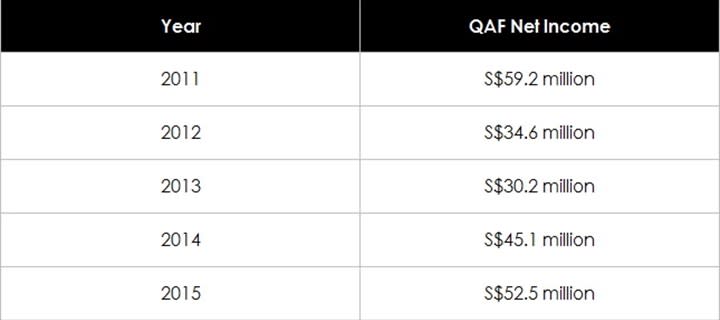Motley Fool: A Look At QAF’s Dividend From 3 Important Investing Perspectives
QAF is a food production company. Its business activities include bakery operations, pork production, food processing and distribution, and more. Some of the company’s food brands are Gardenia, Cowhead, and Farmland.
The company has consistently paid an annual dividend in its last 10 fiscal years. But this raises the question: Is the dividend sustainable in the future?
Unfortunately, there is no easy answer. There is no simple calculation that can tell investors for sure whether a company can grow or maintain its dividend in the years ahead.
But, there are still things about a company’s business we can look at for clues. Here are three of them, keeping in mind that they are not the only important aspects: (1) the company’s profit history, (2) the company’s pay-out ratio, and (3) the strength of the company’s balance sheet.
Profit History
A company’s profits are an important source of its dividends. Has QAF seen any large losses or big declines in profit over the past five years? That is what I am interested in finding out.
Source: Motley Fool Singapore, Company
From the above, we can see that QAF’s net profit had fallen from $59.2 million in 2011 to $30.2 million in 2013. Moreover, the company’s profit in 2015 is still lower than in 2011. But, it is worth noting that there was a one-off gain of $21.3 million from the write-back of allowance for bad debt in 2011; this inflated the profit for the year.
The pay-out ratio
The pay-out ratio refers to the percentage of a company’s profit that is paid out as a dividend.
There are two related things to bear in mind here. First, pay-out ratios should be less than 100 percent; it’s tough for a company to maintain its dividend if it is paying out all its profit. Second, the logic thus follows that the lower the pay-out ratio is, the better it could be; a low pay-out ratio means that a company’s dividend has more buffer to absorb negative developments in the business.
QAF paid a dividend of $0.05 per share in 2015. With its earnings per share of $0.094 in the same year, that works out to a pay-out ratio of 53 percent.
Strength of the balance sheet
A strong balance sheet gives a company a higher chance of being able to protect its dividend. There are many ways to gauge the strength of a company’s balance sheet. One way is to look at the amount of cash and debt a company has; clearly, we wouldn’t want debt to heavily outweigh cash.
In QAF’s case, its latest financials show that it has cash of $94.9 million and total debt of $83.5 million.
A Fool’s Take
To sum up what we’ve seen here, QAF is a company that has been consistently profitable over the last five years, a pay-out ratio of just 53 percent, and a balance sheet with more cash than debt.
Nevertheless, it is worth reiterating that all that we have seen with the company above should not be taken as the final word on its investing merits – after all, like I already mentioned, there are many other aspects of a company’s business to study when it comes to assessing the sustainability of its dividend.
Click here for the original article.

 Yahoo Finance
Yahoo Finance 

